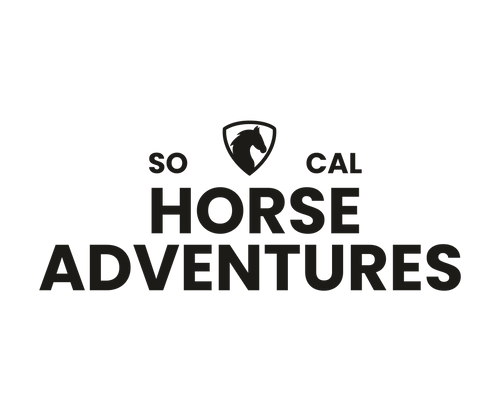Here’s something that surprises a lot of people:
Even the spookiest, most anxious horses usually end up loving the trail.
Not just tolerating it — genuinely loving it.
Because deep down, they’re wired for it.
Horses were made to move. To explore. To cover ground with their herd, eyes wide, ears forward, relaxed in motion.
When we give them a chance to return to that — to move, see, smell, climb, stretch — something in them settles. They remember who they are.
But the first few trail miles?
That’s where it can all go wrong… if it’s not done right.
Most Spooky Horses Just Haven’t Been Shown the Way
It’s easy to think your horse is “just spooky” or “not a trail horse.”
But in our experience, that’s almost never the case.
Most horses aren’t afraid of things — they’re afraid of the unknown.
And if they’ve never been exposed to a world beyond the arena, their reaction to the wind blowing a bag or a stroller squeaking down a trail is completely normal.
It’s not bad behavior.
It’s just an unfinished education.
Why the Trail Is the Cure (Not the Problem)
People often try to “fix” spookiness in the arena. And there’s value in groundwork, sure. But there’s only so much a horse can learn in a quiet, predictable environment.
If we want a horse to stay calm around chaos, we need to let them experience it — with guidance, confidence, and repetition.
That’s where the magic happens.
Because once a horse understands the trail, once they’ve had time to process all the surprises and learn that nothing bad happens… they start to thrive.
We’ve had former racehorses, hot-blooded show horses, and arena-bound warmbloods all come alive on the trail. Ears forward, relaxed steps, curious eyes. They feel like they belong again — and they do.
But Here’s the Catch: The First Few Rides Are the Hardest
This is why we built our 300 Mile Bootcamp. Not to take over your training — but to handle the most dangerous, most delicate part for you.
Because those first 10 or 20 trail rides are the ones where:
-
Horses can bolt, spin, or panic
-
Riders can lose confidence or get hurt
-
One bad ride can undo months of good work
It’s not about skill.
It’s about consistency, calmness, and real-world miles.
And unless you can ride 4–6 days a week for a few hours at a time, it’s nearly impossible to give your horse the kind of exposure they actually need to make a lasting change.
That’s what we do every day.
So Why Send Your Horse to Us?
✔ It’s safer. We’re experienced, and we have the right setups for managing tough rides
✔ We ride every day. Momentum matters, especially in the beginning
✔ We stay calm. Horses take their emotional cues from us — and we’ve done this dozens of times
✔ We get results. And we document every ride with mileage, video, and progress notes
Most of all:
We don’t just ride your horse — we reconnect them with what they were born to do.
What Happens After 300 Miles?
Something shifts.
The spooks fade.
The tension melts.
The horse starts to relax — not just because they’re tired, but because they trust the process.
We see it every time:
-
Ears flicking instead of locking forward
-
Loose reins instead of pulling
-
Curiosity replacing fear
-
And a softness under saddle that makes them an absolute joy to ride
And when that happens, the trail becomes your horse’s happy place — and yours too.
Final Thoughts
If your horse is spooky, nervous, or just hasn’t had much exposure outside the arena — the best thing you can do is get them out. Not in a rushed or chaotic way, but with rhythm, consistency, and patience.
That’s what we offer.
Not a shortcut — a partnership.
A way to help your horse become exactly what they were meant to be: confident, responsive, and genuinely happy under saddle.
📩 Want to learn more about how our program works?
[Read about the 300 Mile Bootcamp here.]
Or send us a message — we’d love to hear about your horse.

